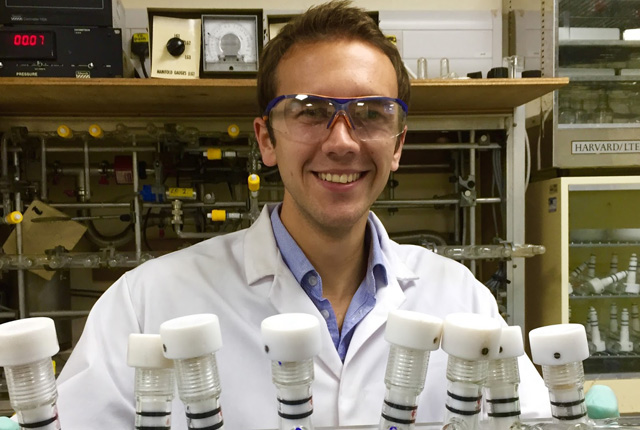An exciting new development in soil phosphate oxygen isotope analysis
Phosphorus is a key nutrient for all life, critical for the development of cells and the functioning of DNA and RNA.
03/06/2017 By BGS Press
Phosphorus is a key nutrient for all life, critical for the development of cells and the functioning of DNA and RNA. It is therefore one of a few key elements that are fundamental for the development of all living things, along with nitrogen and carbon.
When these elements are lacking in the environment, they are often described as limiting nutrients. For this reason, modern farming practices have developed specific fertilisers that help to increase the levels of phosphorus and nitrogen in the soil system. This has helped us drastically improve crop yields.
Why are we interested in phosphorus isotopes?
When the nutrients are lost into streams and rivers, they can promote the growth of algae and damage often delicate natural ecosystems. It is therefore important to understand and trace how these nutrients behave when added into the soil system. This is where isotopes can play their part.
For many years, nitrogen cycling in soil systems has been characterised by the analysis of nitrogen (15N) and oxygen (18O) isotopes in nitrate (NO31-). However, phosphorus only has one stable isotope (31P), and until recently, it has only been possible to extract the 18O signature of phosphate (PO43-) in clean waters (e.g. sea water).
Ground-breaking work undertaken in 2010 at ETH Zurich has made it possible for us to extract inorganic phosphate from soils (which also have many organic phosphorus compounds), so we can now start to trace the phosphate cycle far more closely. It is this method for extracting inorganic phosphorus that BGS has been working on recently.
Extracting inorganic phosphate
Whilst quite complex and time consuming, the extraction technique is based around a few relatively simple principles.
Firstly, soil samples are treated with acid to release the inorganic phosphate into solution. After this, there are several stages where phosphate compounds are precipitated out of solution and washed to remove any unwanted contaminants containing oxygen, which would interfere with the analysis. The final stage is to add a silver solution, which precipitates with the phosphate to form silver phosphate crystals and these crystals are analysed for their oxygen isotope composition.
What’s next?
Now that we have a working method to use at BGS’s Stable Isotope Facility, we hope to be able to work on a whole range of new projects for which this isotope technique is critical. We believe this technique will be invaluable to further our understanding of the interactions of fertilisers and soils systems, and we could also apply this technique to studies of phosphate pollution, phosphate source tracing and potentially palaeoclimate reconstructions.
Acknowledgements
Andi Smith of the Stable Isotope Facility and PhD student Sammi Coyle visited collaborators at Rothamsted Research in Devon to learn more about stable isotope techniques developments. Rothamsted Research is a world-leading research centre in plant and soil science for sustainable agriculture.
The visit was sponsored by the University of Nottingham and Scotland’s Rural College.
Contact
Please contact Andi Smith for further information.





